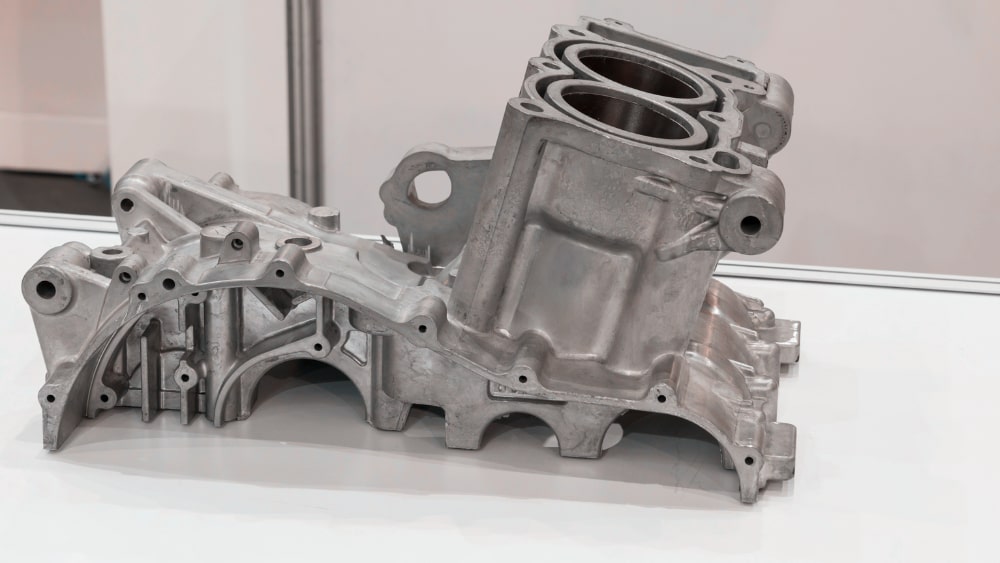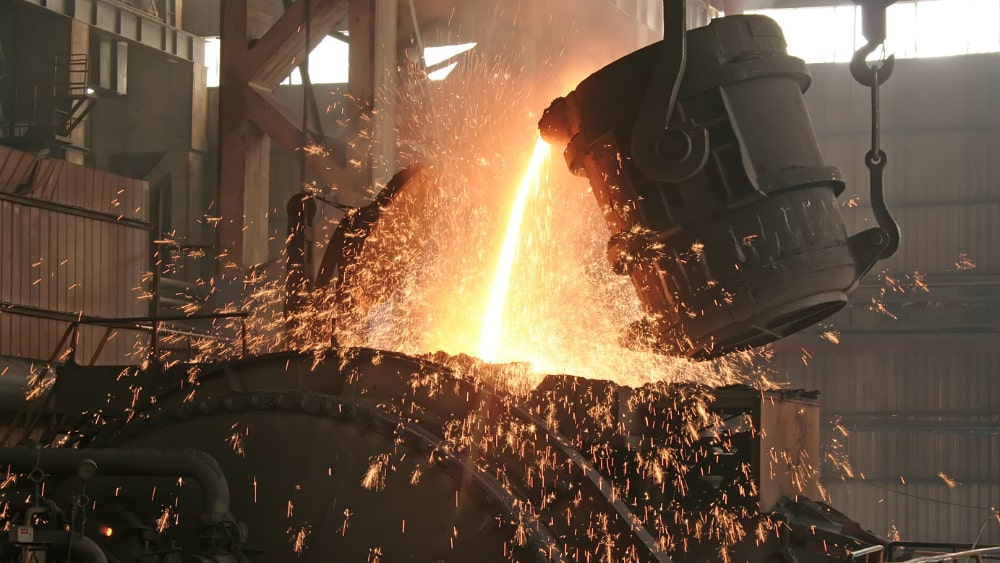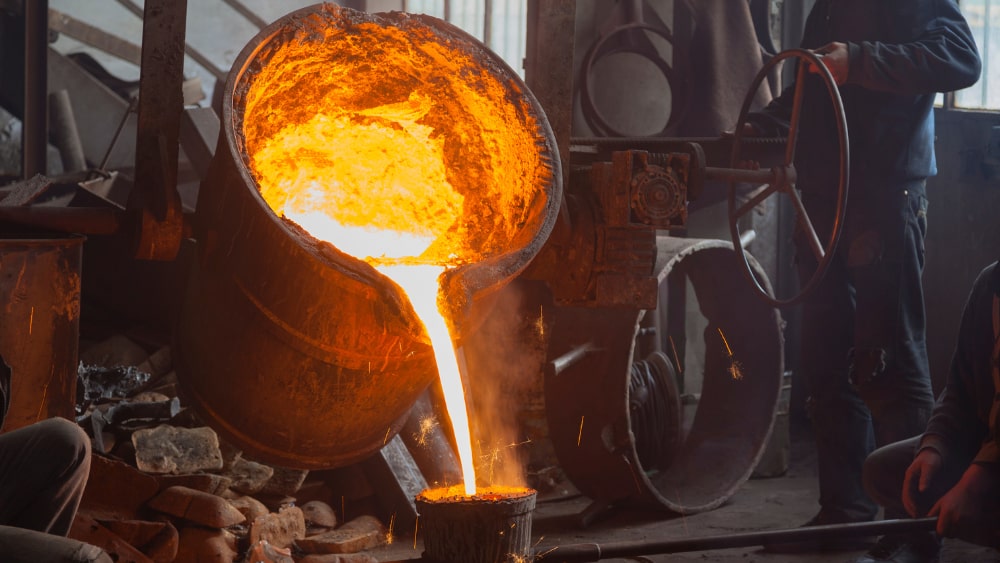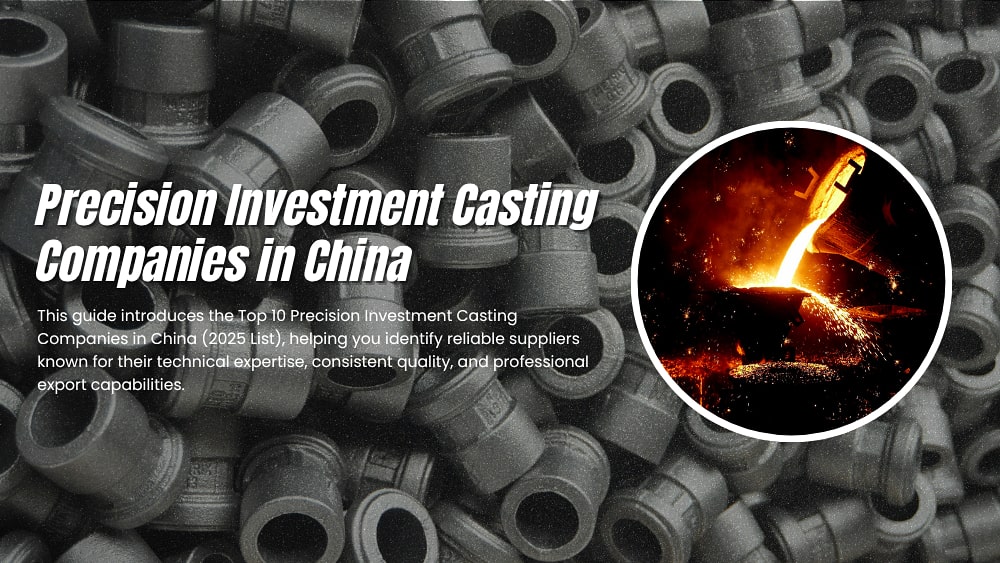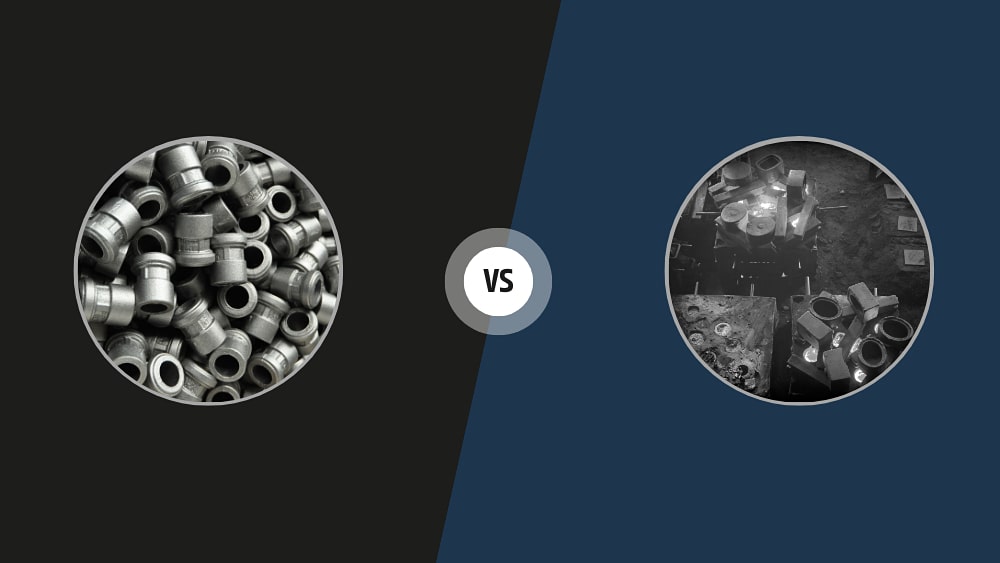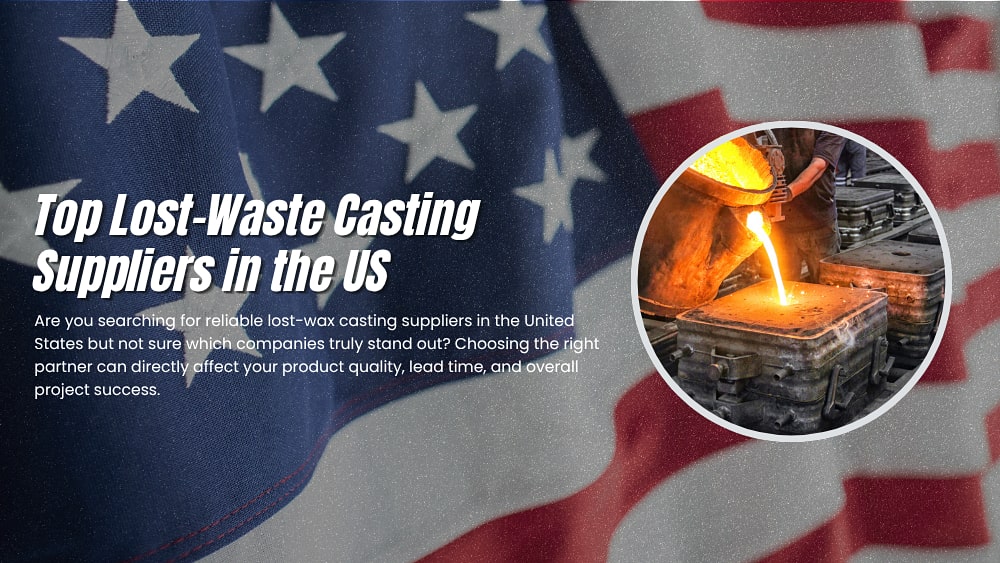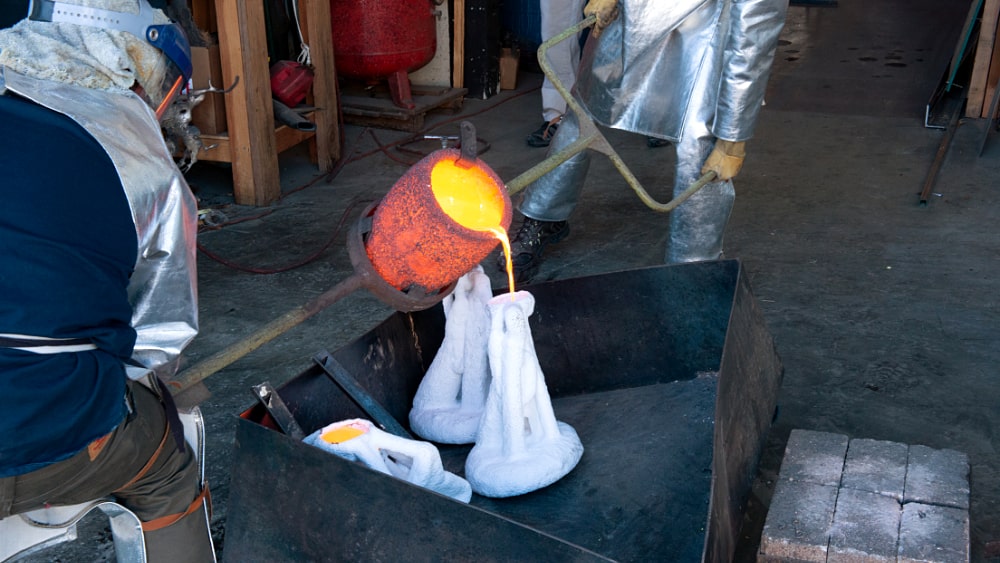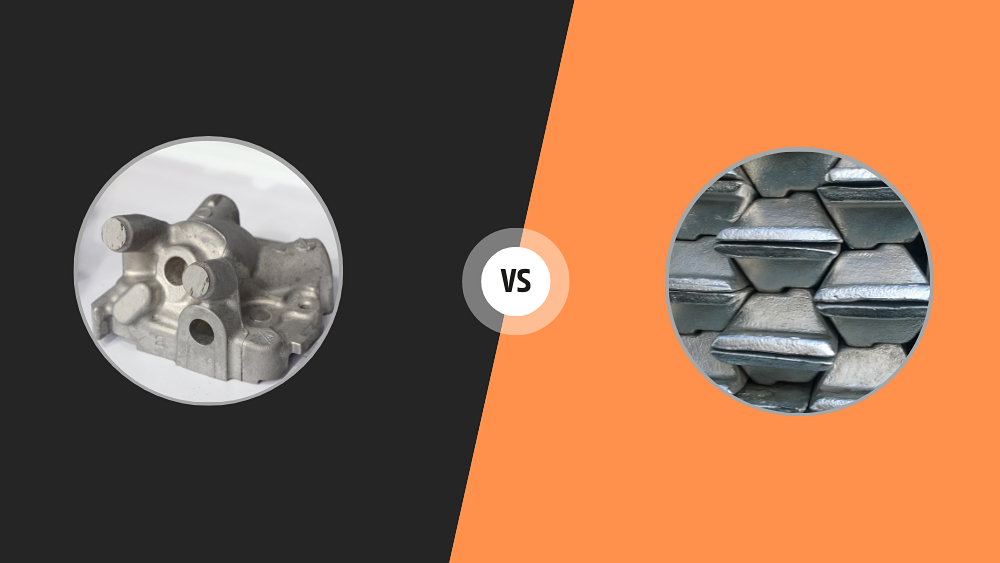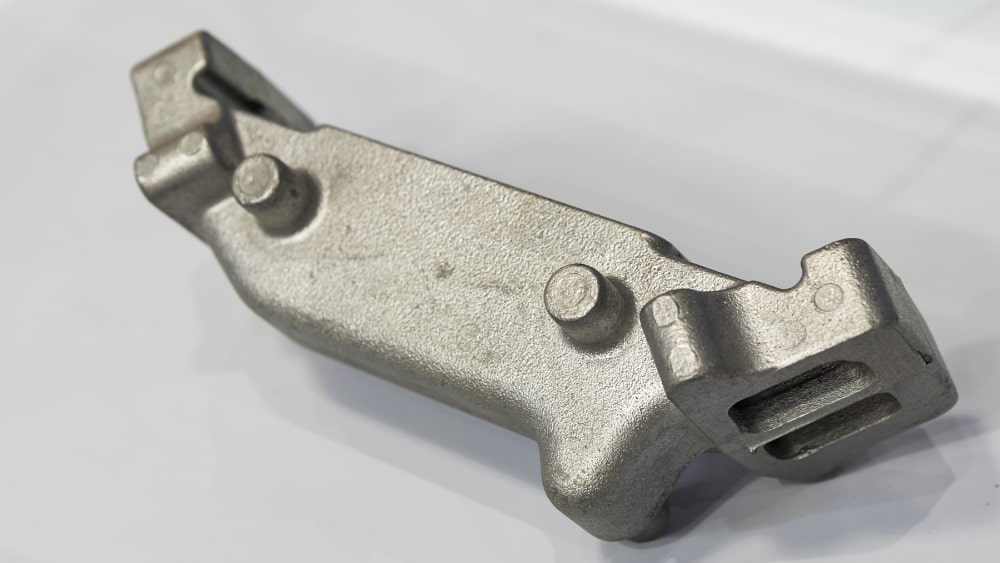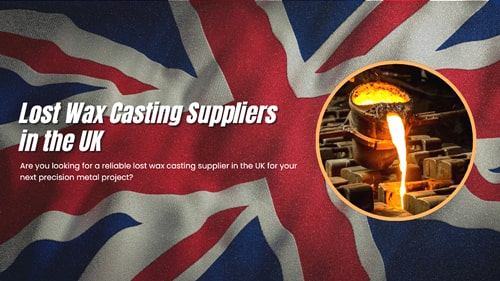
You may be familiar with traditional casting methods, such as sand casting, where molten metal is poured into a mold and allowed to solidify. While effective for many applications, these methods often require extensive machining to achieve precise dimensions and surface quality. Lost foam casting offers a modern alternative that addresses these challenges. Instead of using conventional molds, it employs a foam pattern that evaporates when exposed to molten metal, leaving behind a cavity that forms the final product. This process enables high dimensional accuracy and complex geometries with minimal post-processing. In this article, we will explore the lost foam casting process, the materials best suited for it, and its diverse applications across industries.
What Is Lost Foam Casting?
Lost foam casting is a distinctive metal casting process that shares some similarities with traditional sand casting. In both methods, molten metal is poured into a mold to create a part. The key difference is that lost foam casting uses a foam pattern instead of a solid mold. When molten metal is poured, the foam evaporates, leaving a cavity that exactly matches the pattern. This technique allows for complex shapes, improved dimensional accuracy, and minimal post-casting machining.
What Is Lost Foam Casting Also Known As?
Lost foam casting, developed in the 1950s, is also referred to as “evaporative pattern casting” because the foam pattern vaporizes when molten metal is poured. It is sometimes called “full mold casting” since the foam pattern occupies the entire mold cavity and is completely replaced by metal during the casting process. This method is widely used in automotive, machinery, and industrial applications for producing complex shapes with high dimensional accuracy.
What Are the Main Steps in the Lost Foam Casting Process?
Lost Foam Casting, also known as the Evaporative Pattern Casting process, is a precision casting method where a foam pattern is vaporized by molten metal to form a casting. It is renowned for producing complex shapes with excellent dimensional accuracy.
Step 1: Pattern Creation
A replica of the desired part, known as a pattern, is manufactured from expandable polystyrene (EPS) foam. This is typically done by injecting foam beads into an aluminum mold and using steam to fuse them together. Complex parts can be made by gluing together several simpler foam sections.
Step 2: Pattern Assembly
Multiple foam patterns (e.g., the part itself, gating systems, and risers) are assembled onto a central gating system (also made of foam) using special hot-melt glue. This creates a complete "foam tree" or cluster that will form the entire mold cavity.
Step 3: Application of Refractory Coating
The assembled foam cluster is dipped into a refractory ceramic slurry. After dipping, it is drained and dried. This coating:
Creates a barrier between the smooth foam surface and the dry sand.
Provides a smooth surface finish for the final casting.
Enhances the coating's strength to withstand the sand compaction.
Step 4: Mold Preparation
The coated cluster is placed upside down in a vented flask. The flask is then filled with unbonded, dry sand. The sand is compacted around the pattern using vibration. This ensures the sand fully supports the ceramic coating and fills all cavities, creating a robust mold.
Step 5: Pouring
Molten metal is poured directly into the foam gating system. The intense heat of the metal causes the foam pattern to instantly vaporize (decompose and gasify), precisely displacing the foam and filling the mold cavity. The metal takes the exact shape of the original foam pattern.
Step 6: Cooling
After the mold is completely filled, it is left undisturbed for the metal to solidify and cool to a safe handling temperature. The cooling time depends on the casting's size and wall thickness.
Step 7: Shakeout and Cleaning
Once cooled, the flask is inverted, and the sand is dumped out. The sand, being dry and unbonded, flows freely away from the now-solid metal casting cluster. The ceramic coating is easily removed, often by vibration or blasting.
Step 8: Finishing
The individual castings are cut (e.g., using a bandsaw or grinding wheel) from the central gating system. Any remaining remnants from the gates or risers are cleaned up, resulting in the final finished casting.
Advantages of Lost Foam Casting
The following are a list of advantages of lost foam casting:
✓ Design Flexibility
Lost foam casting allows for the production of highly complex geometries that would be difficult or impossible with other casting methods. Internal passages, undercuts, and complex contours can be easily incorporated into the foam pattern.
✓ Reduced Machining Requirements
Parts produced through lost foam casting typically have excellent dimensional accuracy and surface finish, significantly reducing or eliminating the need for secondary machining operations.
✓ No Cores Required
Unlike traditional sand casting that requires separate cores for internal features, lost foam casting incorporates all features directly into the foam pattern, eliminating core-related defects and simplifying the process.
✓ Minimal Draft Angles
The foam pattern can be easily removed from the mold without damage, allowing for minimal draft angles (as low as 0.5-1 degree) compared to traditional casting methods.
✓ Reduced Part Consolidation
Complex assemblies that would typically require multiple components can often be cast as a single piece using lost foam casting, reducing assembly time and potential failure points.
✓ Environmentally Friendly
The process uses unbonded sand that can be easily recycled and reused. There are no chemical binders involved, reducing hazardous emissions and waste disposal concerns.
Limitations of Lost Foam Casting
Some downsides of lost foam casting include:
✓ Pattern Costs
Foam patterns are more expensive to produce than traditional patterns, making the process less economical for small production runs.
✓ Size Limitations
The process is generally not suitable for very large castings due to handling difficulties with large foam patterns.
✓ Material Restrictions
Not all metal alloys are suitable for lost foam casting, particularly those that require high pouring temperatures.
✓ Pattern Storage
Foam patterns are fragile and require careful storage to prevent damage or deformation before casting.
What Industries and Applications Use Lost Foam Casting?
Lost foam casting is primarily used in industries such as automotive, general machinery, pumps and valves, and agricultural machinery for mass production of complex, high-precision metal parts, such as engine blocks, transmission housings, and various pumps and valves.
The following table summarizes specific lost foam casting applications in various industrial sectors.
| Industry | Typical Applications | Key Benefits |
|---|---|---|
| Automotive |
|
|
| Aerospace |
|
|
| Pump/Valve |
|
|
| Heavy Equipment |
|
|
| Other Industries |
|
|
What Metals Can Be Used in Lost Foam Casting?
Lost foam casting is suitable for a variety of ferrous and non-ferrous metals, with cast iron (especially gray cast iron) and aluminum alloys being the most commonly used. It can also be used for ductile iron, carbon steel, alloy steel, and smaller amounts of copper and nickel alloys.
| Metal Type | Specific Alloys | Key Characteristics | Common Applications | Market Share |
|---|---|---|---|---|
| Aluminum Alloys |
|
|
|
~60% |
| Cast Iron |
|
|
|
~30% |
| Steel Alloys |
|
|
|
~5% |
| Copper Alloys |
|
|
|
~3% |
| Other Alloys |
|
|
|
~2% |
What Is the Cost of Lost Foam Casting?
Lost foam casting costs vary significantly based on production volume, part complexity, and material selection. For tooling, aluminum molds typically range from 3,000−20,000 depending on size and complexity, while steel molds for high-volume production can cost 20,000−50,000+.
Foam pattern costs add 2−80 per part based on size, with small parts (<1kg) costing 2−8 each and large parts (5-20kg) costing 25−80 each. Volume discounts of 10-30% apply for orders over 200-1,000 pieces.
The final casting costs show substantial economies of scale. For aluminum parts, per-unit costs drop from 50−200 for 1-100 pieces to just 8−30 for volumes exceeding 1,000 pieces. Cast iron follows a similar pattern at 80−300 (low volume) down to 12−50 (high volume), while steel parts range from 100−400 to 15−60 respectively.
Additional costs include ceramic coating (0.50−2.00 per part), post-processing (5−50), quality inspection (2−20), and prototyping fees of 1,000−5,000 for initial samples.
The minimum economical production batch is typically 50-100 pieces to properly amortize tooling costs, with optimal volumes reaching 500-2,000 pieces. In small batches, tooling represents 40-60% of total costs, but this decreases to just 5-15% in high-volume production.
What Are the Differences Between Lost Foam Casting and Other Casting Processes?
| Feature | Lost Foam Casting | Sand Casting | Investment Casting | Die Casting |
|---|---|---|---|---|
| Pattern/Mold | Expendable polystyrene foam pattern, unbonded sand mold. | Reusable pattern (wood/metal), bonded sand mold. | Expendable wax pattern, ceramic shell mold. | Reusable metal mold (die). |
| Part Complexity | Very High. Allows for extremely complex geometries and undercuts. | Moderate to High. Limited by pattern withdrawal. | Very High. Excellent for intricate details. | Moderate. Limited by the need to eject from the die. |
| Surface Finish | Good | Rough | Excellent | Excellent |
| Dimensional Accuracy | Good | Fair to Good | Excellent | Excellent |
| Typical Materials | Cast iron, aluminum, steel. | Almost all metals. | Steel, stainless steel, superalloys. | Non-ferrous only (e.g., aluminum, zinc). |
| Production Rate | Medium to High | Low to Medium | Low | Very High |
| Tooling Cost | Medium (for pattern die) | Low (for wooden patterns) | Low to Medium (for wax molds) | Very High (for metal dies) |
| Key Advantage | Design freedom; no cores needed. | Low cost for prototypes & large parts. | High accuracy & fine detail. | High production rate; excellent finish. |
| Key Limitation | Foam pattern cost; special handling. | Poor surface finish; lower accuracy. | High cost; small part size; slow. | High initial cost; limited to non-ferrous metals. |
When to Use Lost Foam Casting?
Core Conclusion: Lost foam casting is a highly competitive choice when producing medium to large, structurally complex near-net-shape metal parts, and when aiming to reduce overall manufacturing costs by eliminating sand cores and minimizing machining.
1. Core Decision Basis
To determine whether a project is suitable for lost foam casting, consider the following three key factors:
| Decision Dimension | Core Criteria and Analysis |
|---|---|
| Part Characteristics |
Area of Advantage: Medium to large parts with complex internal cavities or parts that need integration of multiple components into one. Unique Advantage: No need for sand cores, fundamentally avoiding core making, placement, and related dimensional issues. |
| Material Selection | Relatively Focused Applicability: Best suited for cast iron (especially gray iron) and aluminum alloys. These materials interact most stably with the foam pattern during pouring, making it easier to obtain quality castings. |
| Production Volume | Optimal Range: Medium to high volumes (typically thousands of parts per year or more). This volume is sufficient to amortize the moderate initial cost of producing the foam pattern die (mold). |
| Cost Considerations | Trade-off Point: Accept a moderate initial tooling cost in exchange for a significant reduction in per-part cost resulting from design simplification (no cores), reduced machining, and lower assembly time. |
2. Ideal Application Scenarios
Prioritize lost foam casting when your project meets one or more of the following conditions:
- Component Integration: A product assembled from multiple parts can be designed and cast as a single, complete unit, drastically reducing assembly steps.
- Eliminating Cores: The internal structure of the part would require complex and expensive sand cores in traditional sand casting, with potential for core assembly errors.
- Pursuing Near-Net-Shape: The goal is to obtain a blank very close to the final product in shape and size, minimizing metal waste and machining volume.
3. Main Constraints
Consider other processes or proceed with caution in the following situations:
- Low Volume or Prototyping: Creating a pattern die is not economical. However, CNC machining of foam patterns can be used for small-batch trials.
- Extremely High Surface Finish Requirements: Lost foam castings have a characteristic foam pattern texture; surface finish is inferior to investment casting and die casting.
- Material Limitations: If the planned material is not cast iron or aluminum (e.g., some copper alloys, steel grades), rigorous process trials are needed to assess defect risks.
- Very Small and Simple Parts: For small, structurally simple parts, traditional sand casting or die casting may be more cost-effective.
Lost foam casting is a process that "optimizes the manufacturing process through design innovation." By paying a moderate initial tooling cost, it provides unparalleled design freedom for large, complex structures traditionally difficult to cast, leading to significant subsequent cost savings and efficiency improvements in volume production. It is best suited for engineering projects where structural optimization, weight reduction, and total cost control are top priorities.
People Also Ask
1. What is the difference between lost foam casting and investment casting?
Both suit complex parts, but lost foam is better for larger parts (e.g., engine blocks), while investment casting excels at small, high-precision parts (e.g., turbine blades).
2. Is lost foam casting expensive?
Has medium initial tooling cost, but is suitable for high-volume production to amortize cost, making the per-part cost competitive.
3. What are the common defects in lost foam casting?
Common defects include gas holes (from incomplete foam vaporization), folded skin (from foam decomposition residues), and carbon inclusions.
4. Which materials are most suitable for lost foam casting?
Cast iron (gray iron) and aluminum alloys are the most common and effective materials, as they respond well to the thermal conditions of the process.
5. What is the surface quality of lost foam cast parts?
Surface finish is good, but typically has a characteristic texture from the foam pattern, not as smooth as investment casting or die casting.
6. Can lost foam casting be used for prototyping?
Yes, but not commonly. For single pieces or small batches, directly CNC machining the foam pattern is more economical and faster than making a metal mold.
7. What is the role of the "coating" in lost foam casting?
The coating primarily prevents metal penetration into the sand, supports the foam pattern, and allows gases from foam vaporization to escape.
8. What are the size limitations of lost foam casting?
Theoretically can be very large, but typically used for parts ranging from tens of grams to several tons, limited by foam production equipment and flask size.
Trust Qianhao for Your Lost Foam Casting Needs
Are you working on a component or prototype that requires precision lost foam casting? Let Qianhao handle it. We provide a complete range of lost foam casting services to meet diverse project requirements, from complex industrial parts to custom prototypes.
Our lost foam casting process supports a wide range of materials, complying with GB, ASTM, AISI, DIN, BS, JIS, EN, AS, and AAR standards. We can produce castings with maximum dimensions up to 1500mm × 800mm × 750mm and a minimum wall thickness of 6mm. The casting weight ranges from 1 to 500kgs, with high precision ensured by CT6-8 dimensional tolerances and surface roughness down to Ra12.5μm.
Each project undergoes strict quality inspections at every stage – from foam pattern creation to final casting – to guarantee consistent results. Contact Qianhao today to discuss your project and benefit from professional guidance, efficient production, and high-quality lost foam castings tailored to your needs.


